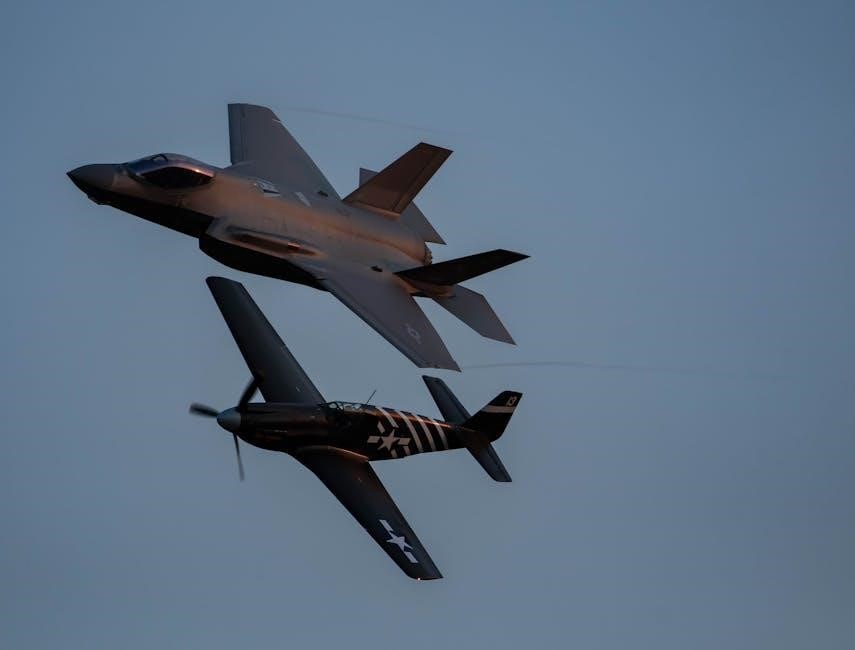A guiding question is a focused inquiry that directs learning and discussion, helping explore complex topics. It encourages critical thinking, engagement, and deeper understanding of subject matter.
Definition and Purpose
A guiding question is a clear, focused inquiry designed to direct learning, exploration, and discussion. It serves as a foundational tool to help individuals or groups investigate complex topics, fostering critical thinking and deeper understanding. The purpose of a guiding question is to provide direction, encourage engagement, and ensure that learning objectives are met. It acts as a roadmap, guiding learners through the discovery process and helping them connect new information to existing knowledge. Effective guiding questions are concise, relevant, and open-ended, prompting thoughtful analysis and meaningful dialogue.
Importance in Learning and Research

Guiding questions play a pivotal role in enhancing learning outcomes by fostering critical thinking and focused exploration. They help learners stay aligned with core objectives, ensuring that efforts are directed toward meaningful goals. In research, these questions streamline the investigation process, guiding the collection and analysis of relevant data. By promoting engagement and curiosity, guiding questions encourage deeper understanding and retention of information. They also support curriculum design and assessment, helping educators measure student progress effectively. Ultimately, guiding questions are essential for creating structured, purposeful learning experiences that cultivate intellectual growth and practical application of knowledge.

Key Characteristics of Guiding Questions
Guiding questions are clear, specific, and relevant, focusing on core objectives while remaining open-ended to encourage exploration and deeper understanding of the subject matter.
Clarity and Specificity
Guiding questions must be clear and specific to effectively direct learning and exploration. Clarity ensures that the question is easily understood, avoiding ambiguity. Specificity focuses the inquiry on a well-defined topic or issue, preventing vague or overly broad exploration. Clear language helps learners and educators stay aligned, ensuring everyone understands the focus. For example, “What were the primary causes of the Civil War?” is more effective than “What happened in the Civil War?” because it targets specific aspects of the topic. This clarity and specificity guide the learning process, making it more structured and purposeful.
Focus on Core Objectives
Guiding questions are designed to align with core learning objectives, ensuring that inquiries remain relevant and purposeful. By focusing on central goals, these questions help learners stay on track and avoid tangents. For instance, a question like “What are the key factors influencing climate change?” directs attention to the main issue, fostering a deeper understanding of the topic. This focus ensures that discussions and explorations are meaningful and aligned with educational or research aims, making the learning process more efficient and targeted. Clear alignment with objectives enhances the effectiveness of guiding questions in achieving desired outcomes.
Relevance to the Topic
Guiding questions must be closely tied to the subject matter to ensure they address the heart of the issue. Relevance guarantees that inquiries are meaningful and avoid unnecessary tangents. For example, a question like “How did the Civil War impact American society?” directly relates to the topic, fostering focused exploration. Irrelevant questions can distract learners, reducing the effectiveness of the learning process. By ensuring questions are pertinent, educators and researchers maintain engagement and clarity, making the inquiry process more productive and aligned with the topic’s core themes. This focus on relevance enhances the overall quality of discussions and outcomes.
Open-Ended Nature
Guiding questions are typically open-ended, allowing for multiple perspectives and encouraging exploration. They avoid yes/no answers, instead prompting detailed responses. For example, “What were the primary causes of the Civil War?” invites analysis rather than a simple reply. Open-ended questions foster critical thinking, creativity, and deeper understanding. They encourage learners to explore various angles, making the inquiry process more engaging and thought-provoking. This approach helps develop analytical skills and promotes meaningful discussions, ensuring that learners go beyond surface-level knowledge. The open-ended nature of guiding questions is essential for fostering a rich and dynamic learning environment.
The Role of Guiding Questions in Education
Guiding questions play a crucial role in education by encouraging interaction between students and teachers, fostering deeper understanding, and directing meaningful discussions. They are essential for effective learning.
Encouraging Critical Thinking
Guiding questions stimulate critical thinking by prompting students to analyze information, evaluate evidence, and form well-supported conclusions. They encourage learners to explore multiple perspectives, question assumptions, and solve complex problems. Open-ended questions, in particular, challenge students to think creatively and develop innovative solutions. By framing learning around these inquiries, educators help students connect ideas, identify patterns, and apply knowledge in real-world contexts. This approach fosters a deeper understanding of subject matter and prepares learners to address challenges independently. Effective guiding questions empower students to move beyond memorization, embracing a more analytical and reflective approach to learning.
Fostering Student Engagement
Guiding questions play a pivotal role in fostering student engagement by making learning interactive and relevant. They encourage active participation, sparking curiosity and motivating students to explore topics deeply. By framing lessons around meaningful inquiries, educators create opportunities for discussion, collaboration, and hands-on application of knowledge. This approach helps students connect with the material on a personal level, increasing their interest and involvement. Engaging questions also promote a sense of ownership in learning, as students feel empowered to seek answers and share insights. This dynamic fosters a more immersive and collaborative educational environment, enhancing overall engagement and motivation.
Guiding Lesson Plans and Curriculum Design
Guiding questions serve as foundational tools in shaping lesson plans and curriculum design. They help educators structure learning objectives, ensuring alignment with overarching goals. By framing lessons around these questions, teachers can organize content cohesively, making it easier for students to follow. Guiding questions also facilitate the integration of diverse teaching methods, promoting a balanced approach to instruction. They act as a roadmap, guiding the selection of materials and activities while maintaining focus on key outcomes. This structured approach ensures that lessons are purposeful, relevant, and tailored to meet the needs of all learners, fostering a more effective and organized educational experience.
How to Build Effective Guiding Questions
Start by identifying the main objective, then use clear, concise language to frame the question. Ensure it is relevant to learners and open-ended to encourage exploration and critical thinking.
Identifying the Main Objective
Identifying the main objective is crucial for creating effective guiding questions. It involves clarifying the central idea or goal the question aims to address. Start by determining the core focus of the topic or lesson, ensuring the question aligns with the desired learning outcomes. Avoid broad or vague statements; instead, pinpoint specific aspects that will guide exploration and discussion. This step ensures the question remains relevant and focused, helping learners stay on track while encouraging deeper understanding and critical thinking. A well-defined objective sets the foundation for meaningful inquiry and engagement.
Using Clear and Concise Language
Using clear and concise language is essential for crafting effective guiding questions. Avoid jargon or overly complex terms that might confuse learners. Instead, frame questions in simple, direct terms to ensure clarity and focus. This approach helps learners understand the question’s intent and engage with the topic more effectively. Clear language also prevents misinterpretation, keeping discussions on track. By eliminating unnecessary words, guiding questions become more precise and actionable, fostering critical thinking and meaningful exploration. Conciseness ensures the question remains focused, guiding learners toward the core objective without unnecessary distractions.
Ensuring Relevance to Learners
Ensuring relevance to learners is crucial for effective guiding questions. Questions should align with learners’ interests, experiences, and prior knowledge to foster engagement and motivation. Tailoring questions to real-world applications or current events makes them more relatable and meaningful. Additionally, incorporating diverse perspectives ensures inclusivity, allowing all learners to connect with the topic. Relevance also involves aligning questions with learning objectives, ensuring they address key concepts and skills. By making questions pertinent to learners’ lives, educators create a more interactive and impactful learning environment, encouraging active participation and deeper understanding of the subject matter.

Examples of Guiding Questions
Examples include: “What invention had the biggest effect in the Civil War?” or “How did non-military factors influence the war’s outcome?” These questions spark exploration and analysis.
Academic Examples
In academic settings, guiding questions often focus on historical analysis, scientific inquiry, or literary interpretation. For instance, “What invention had the biggest effect in the Civil War?” encourages students to evaluate historical impact. Similarly, “How did non-military factors influence the war’s outcome?” prompts a broader exploration of social and economic dynamics. These questions are designed to spark critical thinking, promote deeper understanding, and guide learners through complex topics. They are frequently integrated into lesson plans and curriculum design to ensure alignment with learning objectives and foster meaningful discussion.
Professional and Real-World Applications
Guiding questions are invaluable in professional and real-world contexts, aiding decision-making and problem-solving. For instance, “What is the main objective of this project?” helps clarify goals, while “How can we improve customer satisfaction?” drives actionable insights. These questions foster collaboration, critical thinking, and innovation in workplace settings. They are also used in meetings to ensure alignment and focus. By encouraging open-ended discussions, guiding questions promote creative solutions and strategic planning, making them essential tools for professionals seeking to address complex challenges effectively and efficiently in dynamic environments.
Challenges in Creating Guiding Questions
Creating guiding questions presents challenges such as avoiding ambiguity and preventing bias, ensuring clarity and relevance to diverse learners and contexts effectively.
Avoiding Ambiguity
Avoiding ambiguity in guiding questions is crucial to ensure clarity and focus. Ambiguous questions can confuse learners, leading to misaligned responses. To prevent this, questions should be specific and well-defined, avoiding vague terms. For example, instead of asking, “What is history?” a clearer question might be, “How did key events in World War II impact modern society?” This specificity guides learners toward relevant and focused exploration. Additionally, testing questions with diverse groups can help identify and refine ambiguous phrasing, ensuring the inquiry is universally understood and aligned with learning objectives.
Preventing Bias in Questions
Preventing bias in guiding questions ensures neutrality and fairness, allowing diverse perspectives to emerge. Bias can unintentionally influence learners’ thinking, so questions must be phrased objectively. Using neutral language and avoiding assumptions or stereotypes is essential. For example, instead of asking, “Why is your culture superior?” a neutral question might be, “How do cultural differences impact societal development?” Regularly reviewing and testing questions with diverse groups can help identify and eliminate bias. This ensures that guiding questions promote critical thinking and inclusive understanding, fostering an environment where all learners feel valued and heard.

Best Practices for Using Guiding Questions
Best practices involve aligning questions with learning objectives, fostering meaningful discussions, and using feedback to refine inquiries, ensuring engagement and deeper understanding.
Aligning Questions with Learning Objectives
Aligning guiding questions with learning objectives ensures clarity and focus in education. Educators must design questions that directly tie to desired outcomes, making learning purposeful. For example, if a lesson aims to explore the causes of the Civil War, a guiding question like, “What were the primary factors leading to the Civil War?” aligns perfectly. This ensures students stay on track and understand the relevance of the topic. Regularly reviewing and refining questions based on objectives enhances engagement and achievement, fostering a structured and meaningful learning experience.

Encouraging Discussion and Debate
Guiding questions are powerful tools for fostering meaningful discussions and debates in educational settings. By posing open-ended, thought-provoking inquiries, educators encourage students to share diverse perspectives and engage deeply with the material. For instance, questions like, “What were the primary factors leading to the Civil War?” prompt students to analyze historical events critically. This approach not only enhances understanding but also cultivates collaboration and communication skills. When students are encouraged to debate and discuss, they develop a deeper grasp of complex topics and learn to articulate their thoughts effectively, making learning a dynamic and interactive process.
Using Feedback to Refine Questions
Feedback is a crucial tool for refining guiding questions to ensure they effectively promote learning. Educators can gather input from students and peers to assess the clarity and relevance of their questions. For example, if students find a question ambiguous, educators can rephrase it for better understanding. This iterative process helps identify areas where questions may lack focus or alignment with learning objectives. By incorporating feedback, educators can enhance the quality of their guiding questions, leading to more engaging and productive discussions. This approach fosters a collaborative environment and ensures questions remain impactful and meaningful for learners.
Tools and Resources for Developing Guiding Questions
Utilize brainstorming techniques and digital tools like question generators to craft effective guiding questions. These resources help ensure clarity, relevance, and alignment with learning objectives.
Brainstorming Techniques
Brainstorming techniques are essential for developing effective guiding questions. Methods like mind mapping and SWOT analysis help generate diverse ideas, ensuring questions are focused and relevant. Collaborative brainstorming sessions encourage creativity and critical thinking, leading to well-rounded inquiries. These techniques also help identify key themes and objectives, making questions more aligned with learning goals. By fostering an open environment, brainstorming promotes the creation of questions that stimulate deeper exploration and understanding. Regular practice enhances the ability to craft questions that guide meaningful discussions and engagement, ultimately improving learning outcomes.
Digital Tools for Question Generation
Digital tools like Google’s Question Generator and Quizlet simplify the creation of guiding questions. These tools analyze keywords and topics to suggest relevant inquiries, saving time and ensuring clarity. They often include features to refine questions for specific learning objectives, making them more effective. Additionally, platforms like Kahoot and Edpuzzle allow educators to generate questions that align with curriculum goals, fostering engagement. These tools enhance the quality and relevance of guiding questions, ensuring they are tailored to learners’ needs and promote deeper understanding. They are invaluable resources for educators aiming to create impactful and focused inquiries.

The Impact of Guiding Questions on Learning Outcomes
Guiding questions enhance understanding, retention, and collaboration, fostering engagement and accountability in students, encouraging critical thinking and leading to improved learning outcomes.

Enhancing Understanding and Retention
Guiding questions help learners break down complex topics into manageable parts, fostering deeper understanding. By encouraging active thinking, they promote retention of key concepts. These questions direct focus, ensuring learners connect new information to prior knowledge, enhancing comprehension. For instance, inquiries like “What invention had the biggest effect in the Civil War?” prompt detailed analysis, making abstract ideas tangible. This structured approach not only clarifies concepts but also reinforces memory, enabling learners to recall information more effectively over time. Thus, guiding questions are invaluable tools for enhancing both understanding and long-term retention in various educational settings.
Promoting Collaboration and Communication
Guiding questions foster collaboration by encouraging group discussions and shared problem-solving. They prompt learners to articulate their thoughts, listen to others, and refine their ideas collectively. For example, questions like “What are the implications of…” or “How does this relate to…” stimulate dialogue and teamwork. This collaborative environment enhances communication skills, as students learn to express their perspectives clearly and respectfully. By engaging in these interactions, learners develop essential interpersonal skills, making guiding questions a powerful tool for promoting both collaboration and effective communication in educational and professional settings.
Increasing Accountability and Engagement
Guiding questions enhance accountability by creating a clear focus for learning, ensuring students understand expectations. They encourage active participation, as learners take ownership of their understanding. For instance, questions like “What evidence supports your conclusion?” prompt critical analysis and preparedness. This accountability fosters engagement, as students are motivated to contribute meaningfully to discussions and activities. By aligning questions with learning objectives, educators ensure that students remain focused and invested in their academic journey, leading to improved outcomes and a more engaged, responsible learner community.

Future Trends in the Use of Guiding Questions
Future trends include integrating guiding questions with technology for interactive learning and focusing on cross-disciplinary inquiries to enhance holistic understanding and adapt to evolving educational needs.
Integration with Technology
The integration of guiding questions with technology is transforming education. Digital tools now generate and adapt questions based on student responses, enhancing engagement and personalization. Interactive platforms allow real-time feedback, enabling teachers to refine inquiries dynamically. AI-driven systems can analyze learning data to create targeted questions, ensuring relevance and depth. This fusion of technology and inquiry-based learning fosters a more adaptive and effective educational experience, preparing students for a rapidly changing world. By leveraging tech, guiding questions become more impactful, fostering critical thinking and collaboration in innovative ways.
Focus on Cross-Disciplinary Questions
Guiding questions are increasingly emphasizing cross-disciplinary connections, fostering a holistic understanding of topics. By linking subjects like STEM, humanities, and social sciences, these questions encourage students to explore how concepts interrelate. For instance, a question like “How does climate change impact economic policies?” bridges environmental science with economics. This approach prepares learners for real-world challenges that rarely fit into a single discipline. Cross-disciplinary guiding questions promote creative thinking, collaboration, and the ability to address complex, multifaceted issues. They also align with modern educational goals of developing well-rounded, adaptable thinkers capable of navigating interconnected global challenges.

Conclusion
Guiding questions are essential tools in education, fostering critical thinking and deeper understanding. They enhance learning outcomes by encouraging engagement and exploration of complex topics effectively.
Summary of Key Points
A guiding question is a focused inquiry that directs learning and discussion, encouraging critical thinking and deeper understanding. It helps explore complex topics by fostering engagement and curiosity. Effective guiding questions are clear, specific, and relevant, aligning with learning objectives to promote meaningful dialogue. They are essential in education, enhancing retention and collaboration while keeping learners accountable. By integrating guiding questions into lesson plans, educators can create a structured yet dynamic learning environment that supports both academic and real-world applications, ensuring students develop a comprehensive grasp of the subject matter.
The Evolving Role of Guiding Questions in Education
Guiding questions are increasingly recognized as a dynamic tool in education, adapting to modern learning needs. They now integrate technology, fostering interactive and cross-disciplinary inquiry. Educators use them to connect academic concepts with real-world challenges, preparing students for complex problem-solving. The rise of digital platforms has expanded their application, enabling collaborative learning and global discussions. As education evolves, guiding questions remain a cornerstone, promoting critical thinking, creativity, and engagement. Their ability to adapt ensures they continue to play a vital role in shaping effective and innovative educational practices, aligning with the demands of a rapidly changing world.










